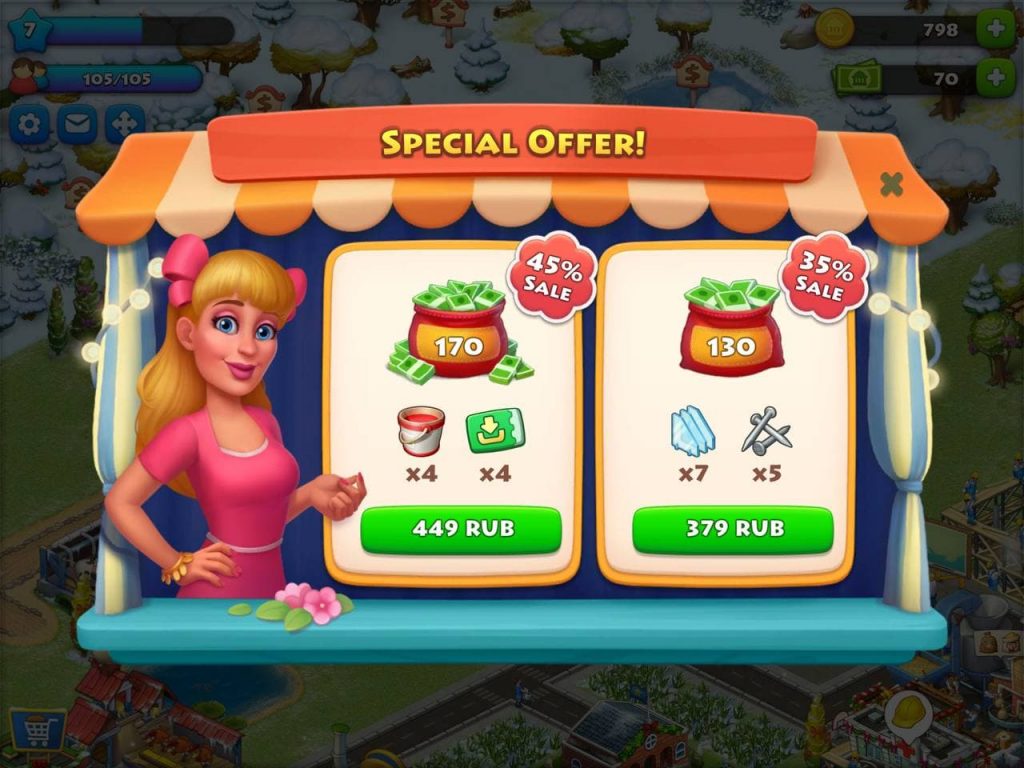Monetization of farming games
How to develop your farming game? What metrics should you be looking at? We’ll look at potential mistakes, move on to examples, and then propose courses of action.
Today’s mobile gaming market sees a lot of games in the “farming” genre. New product releases contain new mechanics and new means of attracting and retaining the users’ attention.
Let’s say you have a product that is not making a profit. At the same time, you cannot launch 12 games per year, or you’ve already eliminated other products. How do you develop your farming game? What metrics should you be looking at?
Conference speakers recommend:
- Swift experimentation;
- Working with quantitative and qualitative user data;
- Knowing your “North Star metric”;
- Be on the lookout for experts outside the “pure game dev” field to add to your team.
And some speakers advise working on growing the metrics, even on weekends, but at the same time, they do not offer any specific steps.
We, on the other hand, have a definitive answer for you. These recommendations are good, but the data is even better. What if your product simply lacks basic monetization instruments or needs a bit more polish? What if your earnings from each sales window fall 1%-2% short? Which, in turn, results in underperformance, longer traffic pay-off, non-competitiveness with the current market. Let’s continue with our analysis one by one: we’ll look at potential mistakes, move on to examples, and then propose courses of action.
Typical errors
We have good Ret1, Ret7, Ret30! We’ve got other problems. Let’s focus on those!
If you look at different games within the same genre, user retention between them can vary even by a factor of 2 while still occupying the top-grossing positions. What you need to be looking at is the retention curve. If by Ret7 you manage to keep 50% of your Ret1 numbers and 25% by Ret30, then you’ve got a product that is good at retaining its audience. If not, then it means the project lacks fun, doesn’t do a good job of grabbing the user’s attention, lacks mystery, and/or something of interest. Or, in the case of a farming game, lacks mechanics for the development of habits.
We have a high LTV14! We just need to improve our UA and recover the costs of traffic!
A strong LTV14 is good, but what’s more important, is whether your projects have LiveOps, events, basic monetization mechanics, and how your paying conversion curve is doing. A new product usually doesn’t have a lot of content, so if the curve takes a downturn before the content is finished, it becomes a serious problem that needs immediate and unwavering attention.
We brought over 10,000 players, lots of whales, the numbers are stellar!
This is not just a mistake – it could be a trap. Whales need to be loved… but not counted. It could be a pure stroke of luck on a specific ad channel or grid. Sometimes, you need to separate your whales, treat them as an outlier, and count the remainder. Moreover, it makes sense to pay attention to the whales if they generate the bulk of the revenue. If they do not stand out quantitatively from the general mass, they can be ignored for the time being.
We’ve got traffic from launching misleading ads like what project X had. The metrics are good; we need to focus on the content.
It’s a working tactic, but it’s risky. Two years ago, misleading ads were valid. A year later — not so much, and right now it’s a huge gamble. They may stop working, or other difficulties with the platforms might arise. These things have already happened. This means that you need to use gameplay traffic for tests. It’s more expensive but will demonstrate real numbers, so you will be prepared when the doomsday of misleading ads arrives.
We’re currently working on improving retention; we’ll work on monetization later, or vice versa.
Focusing on one thing alone for too long can be a mistake. Both directions need to be explored, and iterations are needed in both at once. It is advisable to take turns. It makes the most sense to start with customer retention, because if no one stays in the game, then there is no one to monetize. But once you reach an acceptable level of customer retention, you need to move on to monetization to reach the same level, and then increase the requirements and repeat the cycle.
So, what toolset should you already have on the release day of a farming game? Let’s analyze examples from several games.
Explicit discounts with explicit product allocation.
It works and makes for additional paying conversion in the shop.
